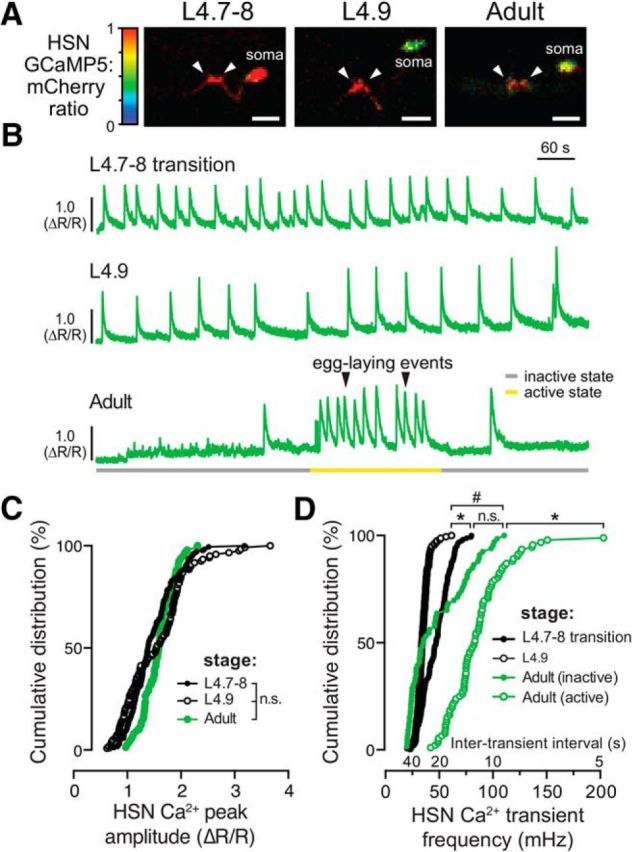Figure 2.

HSN neurons show tonic Ca2+ activity during the late L4 stage and burst firing during the egg-laying active state. A, Representative images of the intensity-modulated GCaMP5:mCherry fluorescence ratio during HSN Ca2+ transients in L4.7–8 and L4.9 larval stages and in adults. White arrowheads show Ca2+ activity localized to the anterior and posterior presynaptic boutons. Scale bar, 10 μm. Anterior is at left and ventral is at bottom. See also Movies 1 and 2. B, Representative GCaMP5:mCherry ratio traces (ΔR/R) of HSN Ca2+ activity in L4.7–8 (top), L4.9 (middle), and in adult (bottom) animals. Adults show distinct active (yellow) and inactive (gray) egg-laying behavior states. Black arrowheads indicate egg-laying events. C, Cumulative distributions of HSN Ca2+ peak amplitudes in L4.7–8 (filled black circles), L4.9 (open black circles), and adults (filled green circles). n.s. indicates p > 0.0809 (one-way ANOVA). D, Cumulative distribution plots of instantaneous HSN Ca2+ transient frequencies (and intertransient intervals) from L4.7–8 (filled black circles) and L4.9 (open black circles) animals and from adult egg-laying inactive (filled green circles) and active (green open circles) states. *p < 0.0001; #p = 0.0283; n.s. indicates p = 0.1831 (Kruskal–Wallis test).
